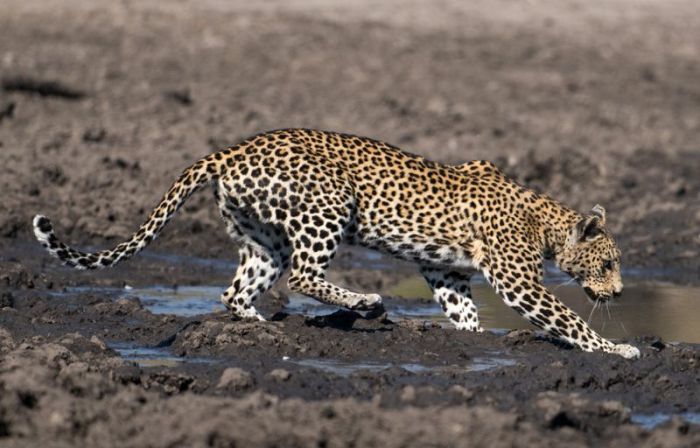|
|
Leopard Fishing In The Mud
|
Leopards must compete for food and shelter with other large predators like lions, tigers, spotted hyenas and both African and Asiatic wild dogs. These animals may steal the leopard's kill or devour its young. A single lion or tiger can kill an adult leopard. In the Kalahari desert, leopards frequently lose kills to the brown hyena, if the leopard is unable to move the kill into a tree. Single brown hyenas have been observed charging at and displacing male leopards from kills. Leopards have adapted to live alongside these other predators by hunting for different types of prey and by avoiding areas frequented by them. In search of safety, the leopard will often stash its young or a recent kill high up in a tree. Lions are occasionally successful in climbing trees and fetching leopard kills.
Nowell and Jackson note that resource partitioning occurs where the leopard shares its range with the lion or tiger: the leopard tends to take smaller prey, usually less than 75 kg, where its large cousins are present. In the Chitwan National Park in Nepal, leopards killed prey ranging from less than 25 kg to 100 kg in weight with most kills in the 25-50 kg range; tigers killed more prey in the 50-100 kg range. In the tropical forests of Nagarhole National Park in India, tigers selected prey weighing more than 176 kg, whereas leopards selected prey in the 30-175 kg range. The average weights of leopard prey was 37.6 kg, and of tiger prey was 91.5 kg with a bias towards adult males of chital, sambar and wild pig, and young gaur. One tropical forest study suggests that leopards do not always avoid the larger cats by hunting at different times. With relatively abundant prey, tigers and leopards were seen to successfully coexist without competitive exclusion or inter-species dominance hierarchies that may be more common to the savanna. In areas with high tiger populations, such in the central parts of Kanha National Park in India, leopards are not permanent residents, but only transients. They were common near villages at the periphery of the park and outside the park.
|
|









